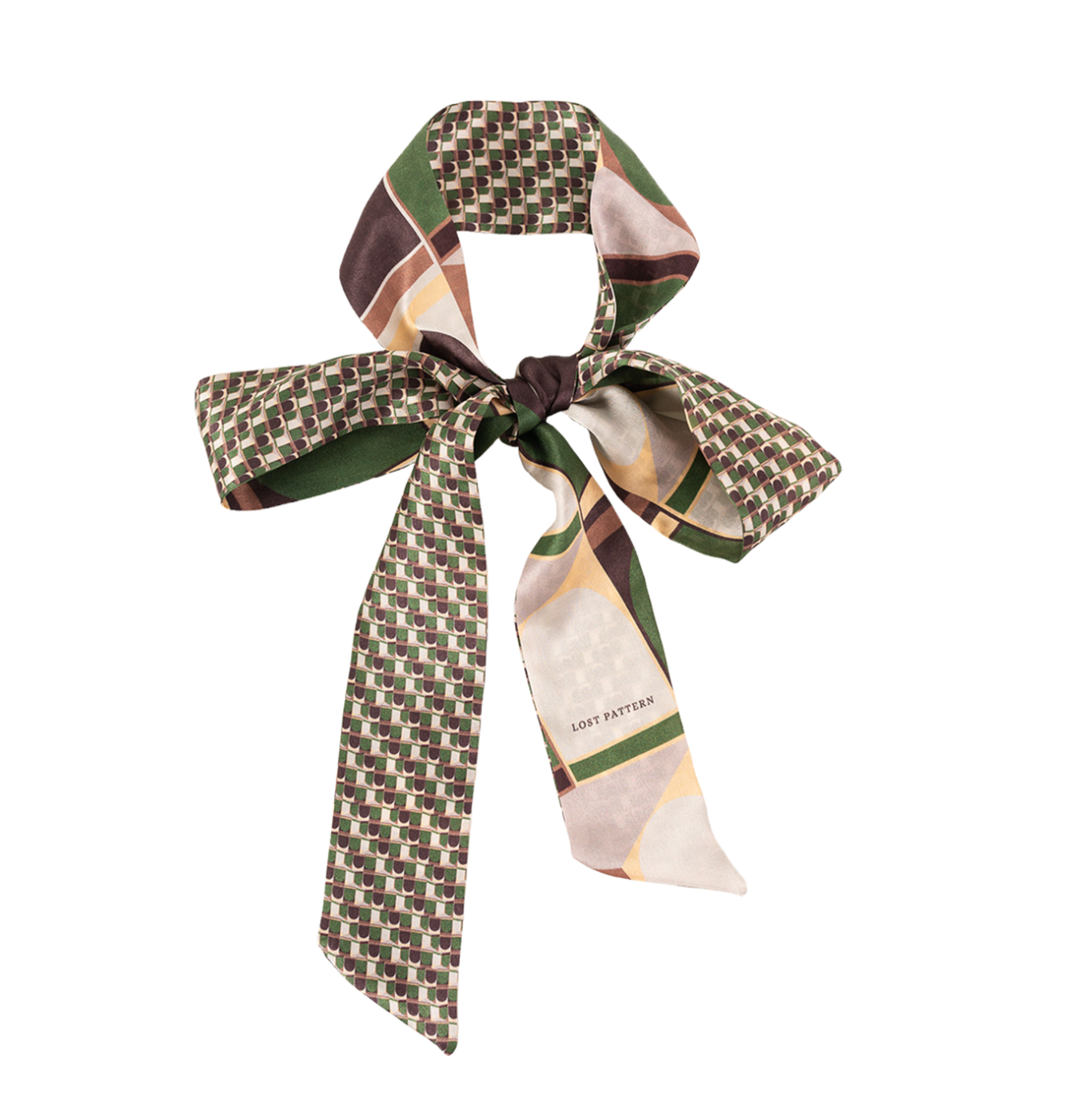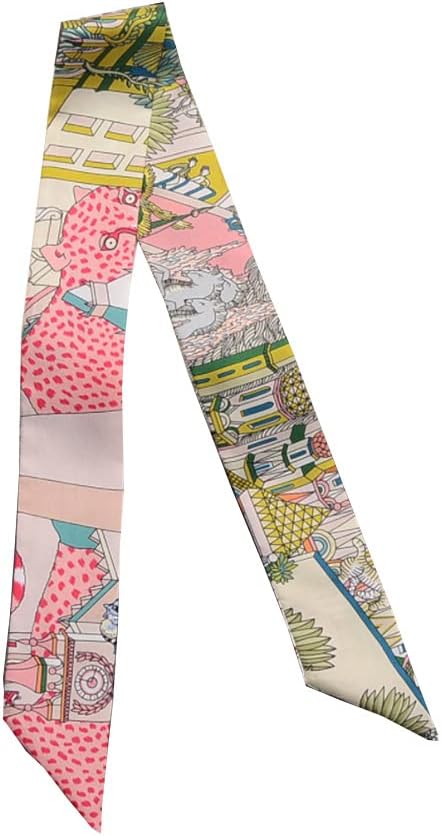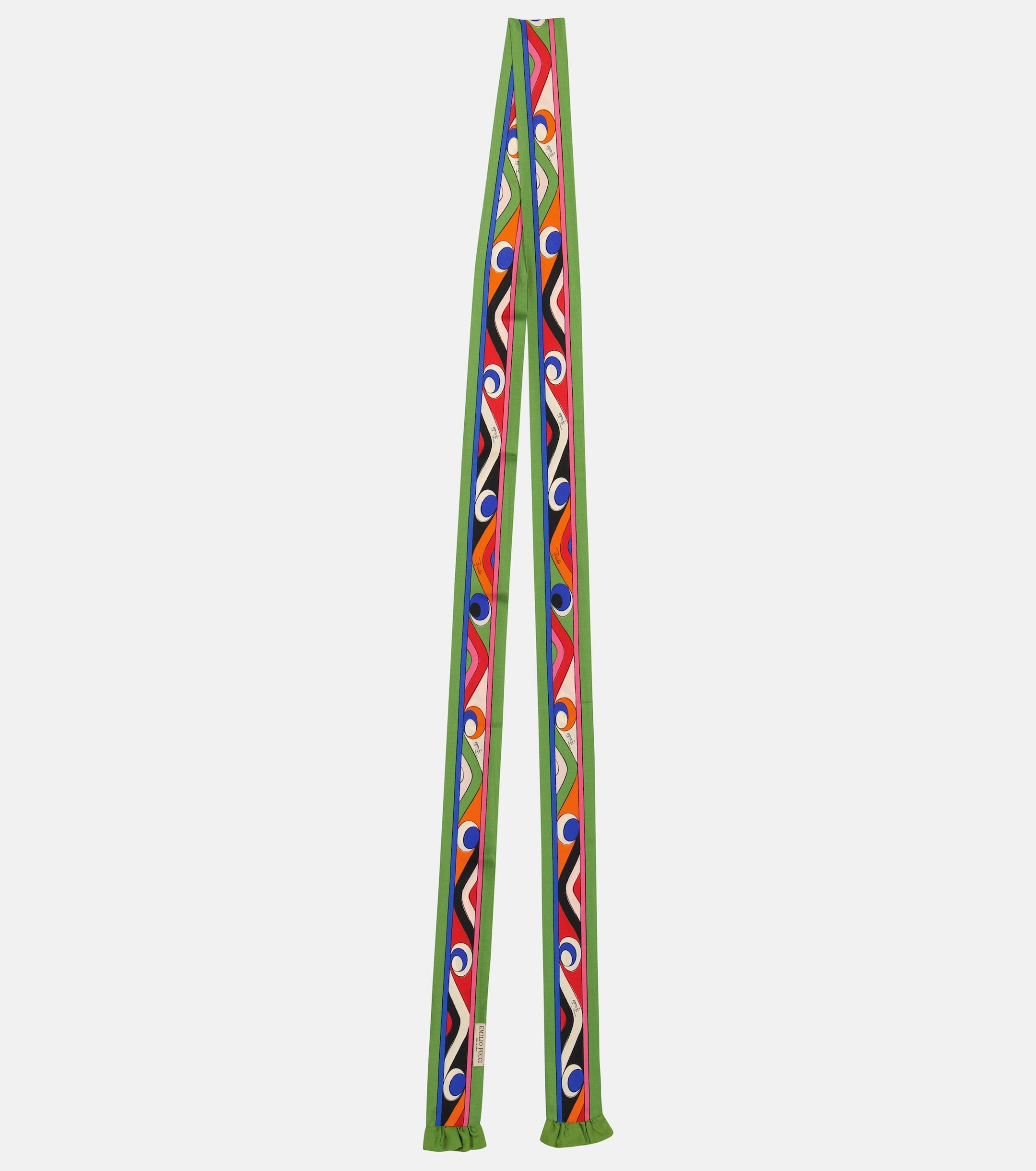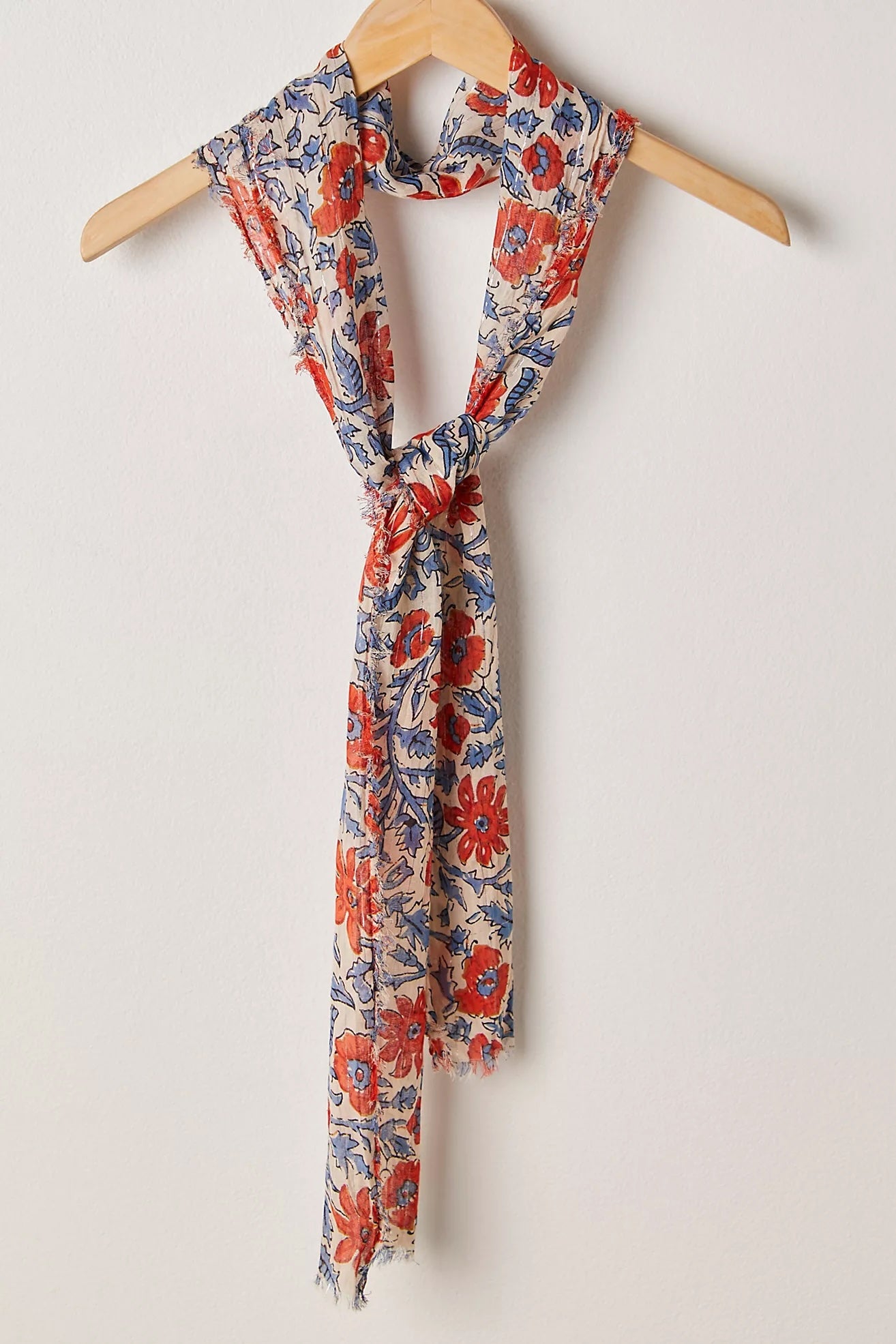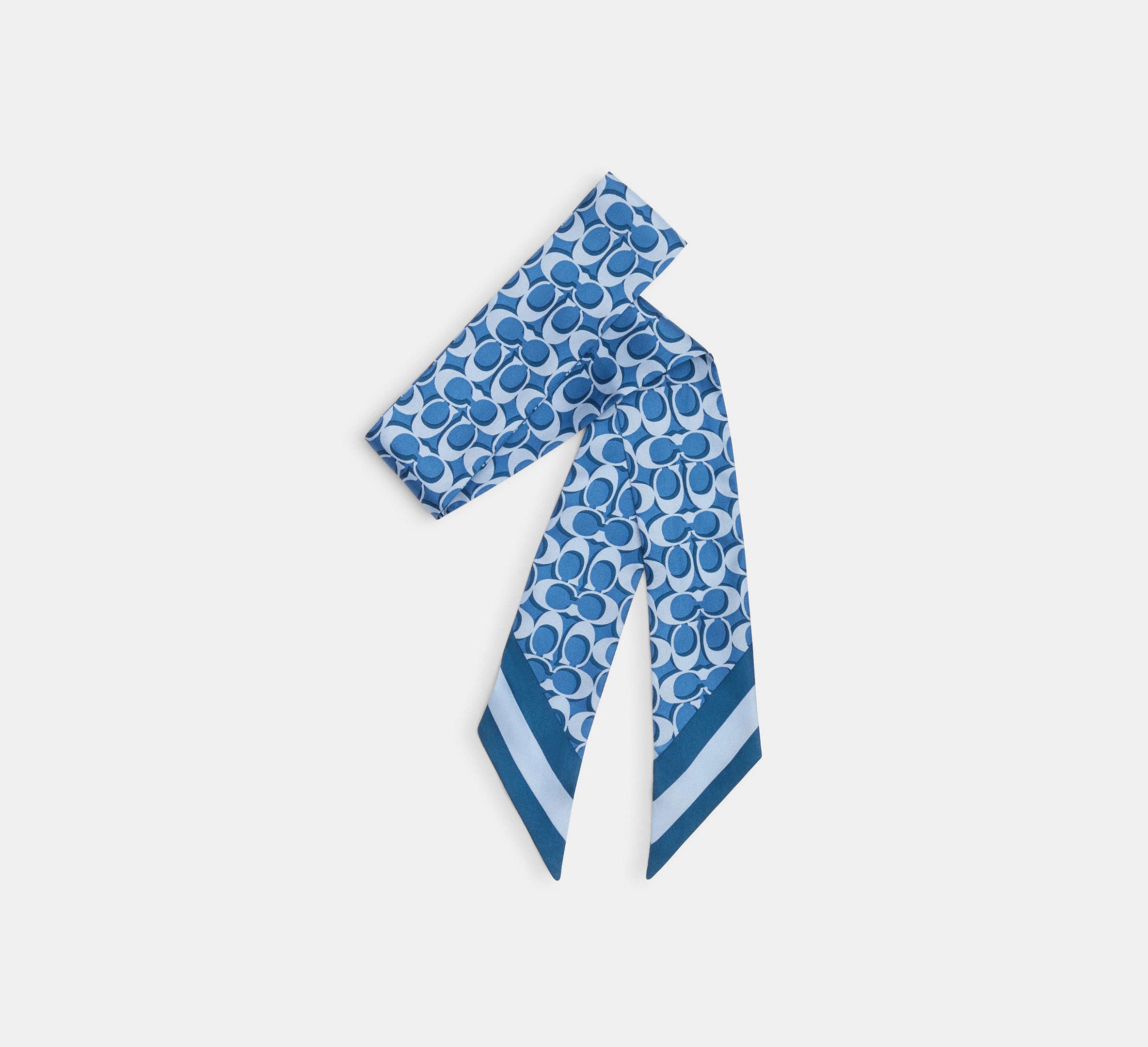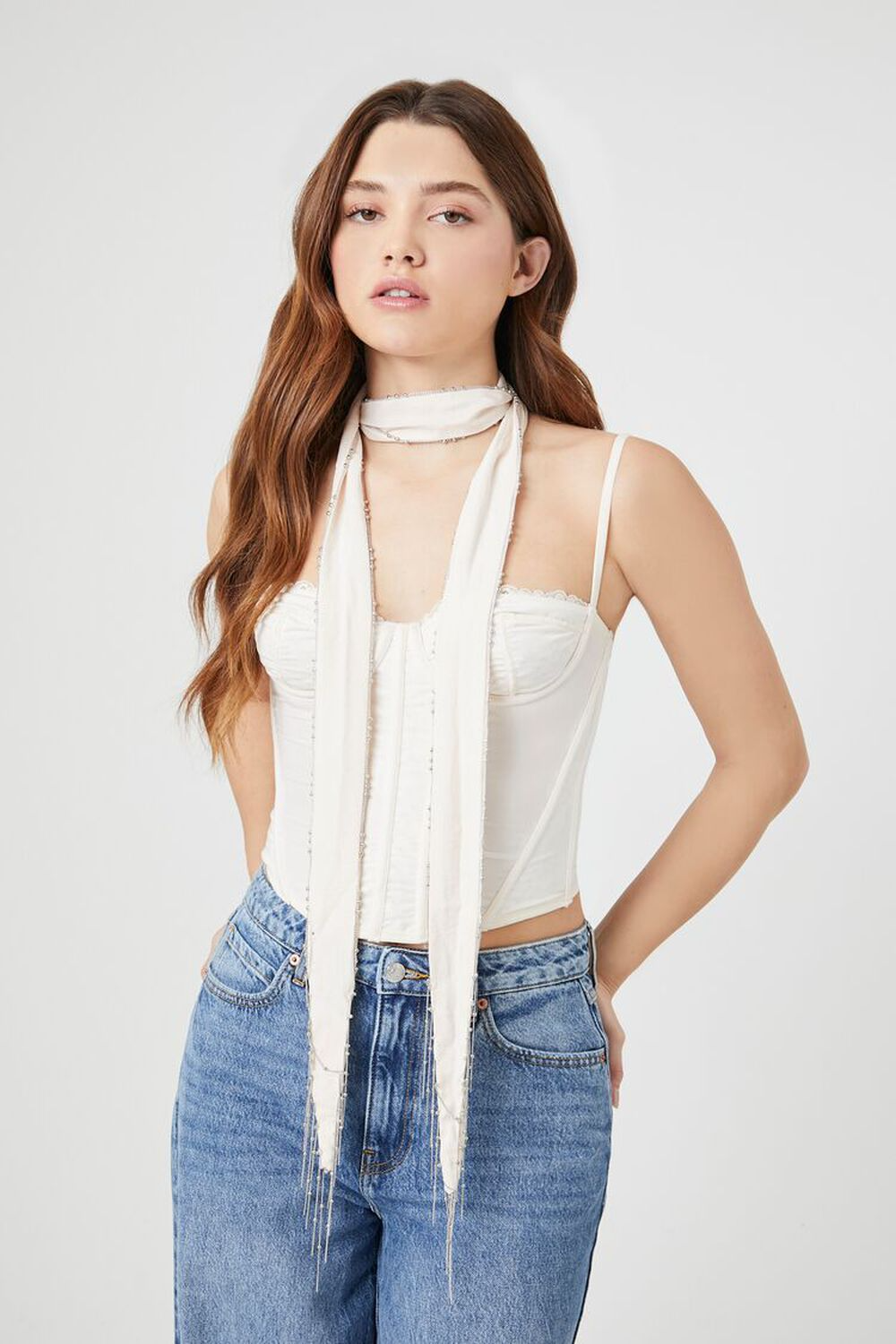All linked products are independently selected by our editors. If you purchase any of these products, we may earn a commission.
On her recent trips to Paris, a skinny scarf has been model Emily Ratajkowski’s pièce de résistance, from the netted naked dress accessory she wore to a Loewe show to the red chiffon version she knotted at the side and teamed with a little black dress. And she’s not alone — fellow model Elsa Hosk also sported the skinny scarf look on her feed in October 2023, and influencers like Claudya Moreira and Matilda Djerf have given us plenty of inspiration for styling the neck accessory this year.
While some TikTok reactions have applauded the resurgence of the popular Y2K accessory, others suggest it’s not very practical and associate it more with Disney stars or the Olsens in the early 2000s than chic Parisian attire à la Kate Moss. Still, recent tutorials abound on how to DIY one, use it to take your look from day to night, or weave it into your jewelry or handbag.
AdvertisementADVERTISEMENT
Stylist Risa Kostis summarizes why the trend remains divisive: “Since skinny scarves are a nod to 2000s fashion, which is both celebrated and critiqued, you either love it or you hate it. For some, the return of the skinny scarf brings back fond memories of iconic styles from that era, while others see it as a forever fashion ‘no,’” she tells Refinery29.
Of course, skinny scarves date back much further than the aughts. In the 1920s, they were draped along the bodice of drop-waist dresses (which are also trending this year), perhaps knotted loosely at the center to elongate the frame. “These were the debut days of the bob haircut, so it was common to highlight the hair by accessorizing and experimenting with a barely there piece like this,” Kostis explains.
In the 1950s, we also saw the skinny scarf in patterned fabrics, shorter lengths, and more taut styling — perhaps looped around the neck twice, like a choker, with a bow to play up a colorful poodle skirt. Kostis mentions the skinny scarf’s symbolic references in the 1960s, when it was a nod to mod subculture, especially in splashy geometric prints, which could be interpreted as a rejection of conventional styles at that time. And even later, we saw it during the bohemian rocker move of the ’70s — a look implemented by Moss into the late ’90s — with the scarf nonchalantly thrown over a blouse, and a peek of lingerie, seemingly as an afterthought.
Today, the skinny scarf parallels artistic expression (especially when people are crafting their own). In simpler iterations, the skinny scarf can help achieve the “French girl aesthetic,” commonly associated with Brigitte Bardot, Jane Birkin, and Charlotte Gainsbourg. “In this context, the skinny scarf symbolizes an innate sense of style and an appreciation for subtlety in fashion,” Kostis says.
AdvertisementADVERTISEMENT
Designers have been incorporating skinny scarves into their runway collections for the past few years — though we all know it takes celebrities and influencers to bring an aesthetic from costume-like territory to everyday street style. Both Kostis and stylist Diva Dhawan point to a few favorite examples from recent seasons, including Gucci’s Fall 2024 menswear and Saint Laurent’s spring 2024 ready-to-wear. In both instances, extra-long strips of fabric were fastened with hardware to evoke statement jewelry, serving as a focal point more than a low-key accouterment.
While there are many mainstream retailers where you can shop skinny scarves today (unsurprising, since Google Trends shows the term reached peak popularity in search in December 2023), both Kostis and Dhawan like the idea of sourcing vintage Chanel, Pucci, and Prada from the likes of The RealReal, 1st Dibs, Poshmark, and Dora Maar. If you’re looking for an affordable ribbon to play with stat, Kostis suggests an option from Jerla, which comes in a multitude of colorways, or the bright and bold lineup at Wolf & Badger.
Whereas Kostis’s go-to styling advice is a basic tank and jeans for a Y2K-leaning outfit, or a poplin dress and slides for a Parisian moment (both ways allow for full attention on the scarf), Dhawan loves the idea of easing into the trend by leaving the skinny scarf loose and open atop basics for starters.
AdvertisementADVERTISEMENT
As for whether or not Ratajkowski, Hosk, and the rest of the celebrity and influencer crew can keep the skinny scarf from dying this time around, Kostis and Dhawan make fair points about the practicality of the accessory.
“I feel like with a trend like the skinny scarf, there aren’t enough ways to mix it into your wardrobe the way you would with, say, crop tops or low-rise jeans,” Dhawan notes. “Also, you’re not going to wear it every day or put that much effort into finding more than a few ways to style it. This is why people usually tend to disagree on how real this comeback is.”
Kostis offers a poetic illustration of where your own skinny scarf might be right now: “Often the folded and forgotten accessory that gets tucked away and trashed once you rediscover it during a move, or the strange piece of fabric that hangs in a cluttered mess on a scarf holder you bought from an infomercial, it’s usually the first thing added to the donation pile,” she says, attesting that a 90 x 90 silk scarf you might take on vacation is far more timeless. Of course, someone like Kate Moss, who has yet to retire the skinny scarf from her wardrobe, would probably disagree.
AdvertisementADVERTISEMENT







